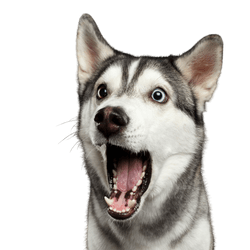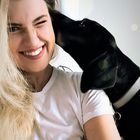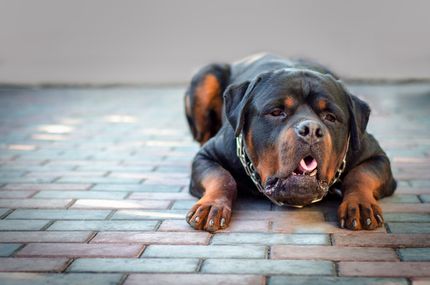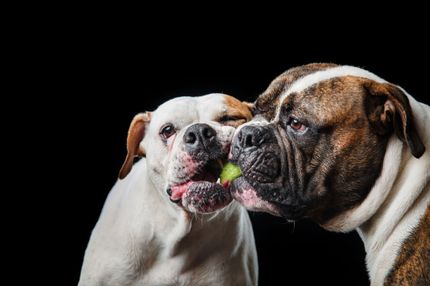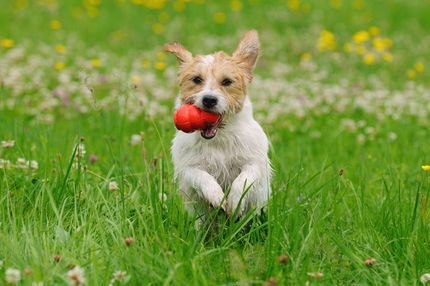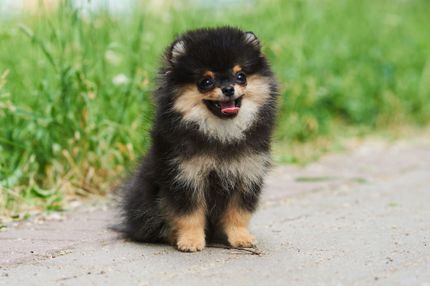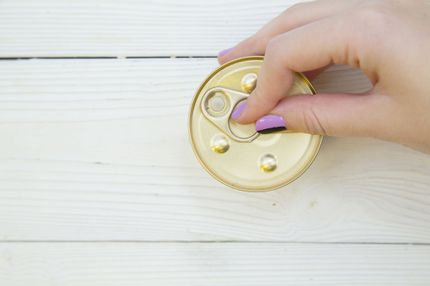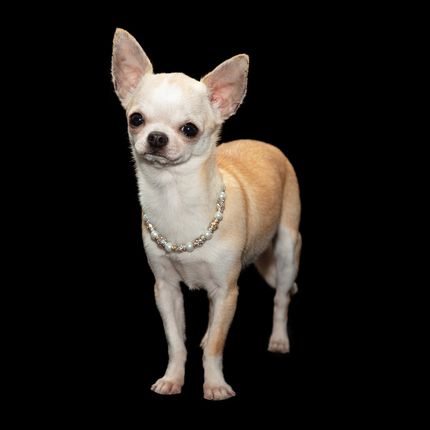Facts & Origin
Siberian Husky and Akita Inu in one
The Huskita is a hybrid breed created by crossing a Siberian Husky with an Akita In u. Both parents have a long history as enduring working dogs - the Husky as a sled dog from the far north, the Akita as a courageous, dignified companion and hunting dog from Japan.
The deliberate combination of these two independent, intelligent breeds probably became popular in recent decades, especially in North America. The aim was to create an imposing, loyal and enduring dog that is both athletic and alert - and immediately attracts attention with its appearance.
Name synonyms for the Huskita
The most common name is Huskita, a fusion of "Husky" and "Akita". The terms Husky-Akita mix or, more rarely, Akihusky can also be found, although these are less established. Despite the name variation, the same crossbreed is always meant.
Criticism of the Huskita
As with many designer dogs, there is also criticism of the Huskita. In particular, it is questioned whether the combination of two such independent and demanding breeds really makes sense. Both parent breeds are considered strong-willed, independent and not necessarily suitable for beginners - characteristics that are often reinforced in the Huskita.
In addition, Huskies and Akitas have very different temperaments: The Husky is more outgoing and eager to move, while the Akita is more reserved, territorial and alert. This mixture can lead to a dog that is difficult to assess if it is not consistently trained and sufficiently occupied. The Huskita needs mental and physical exercise as well as a close, trusting relationship with its human - otherwise it tends to become bored, stubborn or even have behavioral problems.
Suitability of the Huskita
In experienced hands, the Huskita can be a loyal, intelligent companion with a strong character that takes its caregiver very seriously and bonds closely with them. It is particularly suitable for active people who are prepared to deal with the breed's typical needs and offer it both leadership and freedom in the right proportions.
The Huskita is generally not the right choice for families with small children, first-time owners or people with little time. However, those who give him the necessary attention, exercise and training will be rewarded with a loyal, powerful and impressive dog.
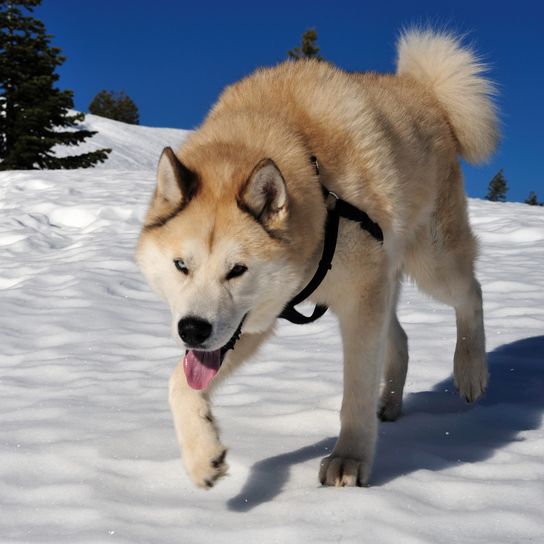
| Alternate Name | Husky-Akita mix, Akihusky |
| Origin | Japan - USA |
| Life expectancy | 10 - 15 years |
| Care requirements | high-maintenance |
| Activity level | average to high - high |
| FCI group | not recognised |
| AKC group | not recognised |
| KC group | not recognised |
More Akita Inu mixes
More Siberian Husky mixes
Attitude, character and temperament of the breed
Possible character traits of the Huskita
The Huskita is usually an independent, alert and self-confident dog that can form a close bond with its human - but often only under certain conditions. Many Huskitas display a mixture of the outgoing, energetic nature of the Husky and the more serious, dignified demeanor of the Akita. This makes them particularly interesting, but also demanding to manage.
They are considered intelligent, capable of learning and thoroughly loyal, but often question authority if their upbringing is inconsistent or unclear. A well-socialized Huskita can be friendly, attentive and reliable, but reacts sensitively to false pressure or neglect. Many are rather reserved towards strangers, sometimes even suspicious - this can result in healthy vigilance with good leadership.
Character
Possible diseases of the Huskita
As both parents are large, strong dogs, typical diseases of large breeds can also occur in the Huskita. These include hip dysplasia, elbow dysplasia and arthrosis. Eye diseases such as progressive retinal atrophy or cataracts are also possible.
Another issue is genetic sebadenitis (a skin disease), which is particularly common in the Akita, as well as autoimmune-related problems. Potential owners should also be aware that huskitas - like many Nordic mixes - have a dense coat, which can lead to skin problems if not cared for properly.
Responsible breeding, regular veterinary check-ups and species-appropriate husbandry are important factors in minimizing these risks.
This is what a Huskita can look like
Visually, the Huskita is an imposing, powerful dog whose appearance depends heavily on the genetic distribution. It is usually a medium-sized to large dog, with a shoulder height of 55 to 70 cm and a weight of between 25 and 45 kilograms.
The body is athletic, muscular and often symmetrical. The coat is dense, medium to long, with a thick undercoat - typically high-maintenance, especially when shedding. Many colors are possible: from white, grey and black to shades of red and sand to multi-colored or piebald variants. The eyes can be dark brown or ice blue, and in rarer cases heterochromia (two different colored eyes) occurs.
Overall, the Huskita appears powerful, focused and confident - a dog that immediately stands out due to its presence.
| Fur length | medium |
| Fur | - flat coated |
| Ear shape | Standing Ears |
| Tail | rolled up - fanned out |
| Anatomy | muscular, rugged, massive, strong, rugged, strong, sporty |
| Size ♀ | 50 - 66 cm |
| Weight ♀ | 16 - 45 kg |
| Size ♂ | 54 - 71 cm |
| Weight ♂ | 20 - 59 kg |
| Suitable For | - |
Known Diseases
Sebadenitis
Sebadenitis is a skin disease in dogs that leads to inflammation of the sebaceous glands. This can lead to dandruff, hair loss and itching.
Hypothyroidism
Hypothyroidism is a condition in dogs where the thyroid gland does not produce enough thyroid hormones. This can lead to a slowed metabolic rate, weight gain, fatigue, hair loss and other symptoms.
Hip dysplasia (HD)
Hip dysplasia (HD) is a genetic condition in dogs where the hip joint is not shaped properly. This leads to pain, stiffness and restricted movement.
congenital vestibular syndrome
hereditary disease of the inner ear
Spondylosis
pathological changes in the vertebral bodies and intervertebral discs
Arthrosis
Osteoarthritis is one of the most common diseases in dogs. Dogs have an innate, strong urge to move
Eye diseases
Often occur with allergies and intolerances.
Skin inflammations
Can be hereditary in certain breeds.
FAQ
-
The appearance of a Huskita can vary greatly. A Siberian Husky and Akita Inu mix typically has a dense coat.
-
A Siberian Husky and Akita Inu mix will inherit traits from both parent breeds, meaning they will be loyal, loving and protective. However, they may also inherit some of the less desirable traits from both parent breeds, such as being independent and stubborn.
-
A Siberian Husky and Akita Inu mix needs a lot of exercise as both parents are considered to be very energetic. It is important to make sure they get plenty of daily exercise, such as a long walk or run, to prevent them from becoming bored or destructive.
-
Siberian Husky and Akita Inu mixes probably need more grooming than most other dog breeds as they have a dense coat. It is important to brush them regularly to prevent their coats from matting and to keep them looking their best.
-
Huskitas make excellent family dogs as they generally get on well with children. However, it is important to introduce them to children at an early age and supervise them when they are together, as the Akita-Inu part of the mix can be too protective for some children.

